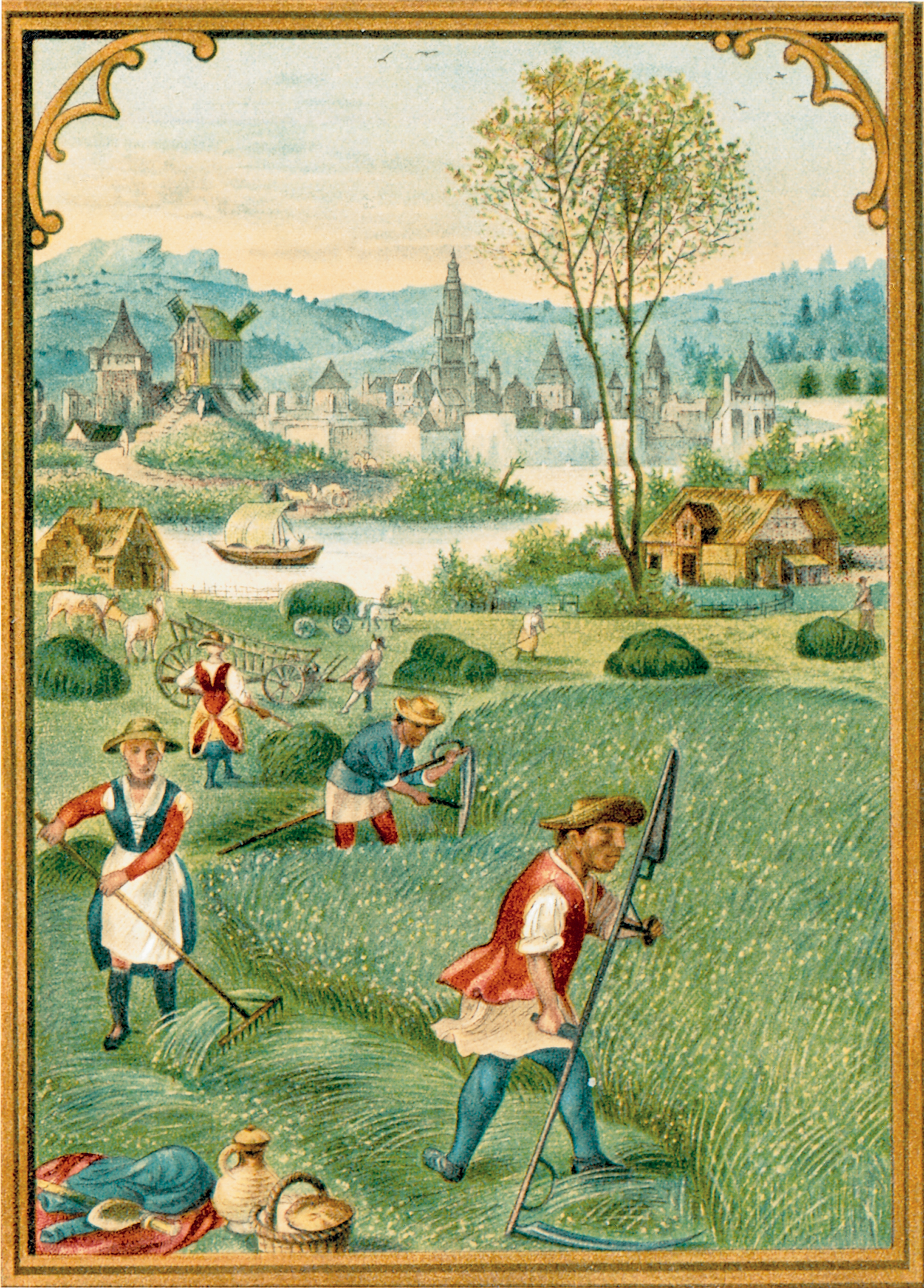A History of World Societies:
Printed Page 525
A History of World Societies Value
Edition: Printed Page 524
The Social Order and Peasant Life
Peasants occupied the lower tiers of a society organized in hierarchical levels. In much of Europe, the monarch occupied the summit, celebrated as a semidivine being chosen by God to embody the state. In Catholic countries, the clergy constituted the first order of society, due to its sacred role interceding with God and the saints on behalf of its flocks. Next came nobles, whose privileged status derived from their ancient bloodlines and centuries of sacrifice on the battlefield. Christian prejudices against commerce and money meant that merchants could never lay claim to the highest honors. However, many prosperous mercantile families had bought their way into the nobility through service to the monarchy in the fifteenth and sixteenth centuries, and they constituted a second tier of nobles. Those lower on the social scale, the peasants and artisans who formed the vast majority of the population, were expected to show humble deference to their betters. This was the “Great Chain of Being” that linked God to his creation in a series of ranked social groups.

In addition to being rigidly hierarchical, European societies were patriarchal, with men assuming authority over women as a God-
In the seventeenth century the vast majority of Europeans lived in the countryside, as was the case in most parts of the world. The hub of the rural world was the small peasant village centered on a church and a manor. Life was in many ways circumscribed by the village, although one should not underestimate the mobility induced by war, food shortage, and the desire to seek one’s fortune or embark on a religious pilgrimage.
In western Europe a small number of peasants owned enough land to feed themselves and possessed the livestock and plows necessary to work their land. Independent farmers were leaders of the peasant village. They employed the landless poor, rented out livestock and tools, and served as agents for the noble lord. Below them were small landowners and tenant farmers who did not have enough land to be self-
Rich or poor, east or west, bread was the primary element of the European diet. The richest ate a white loaf, leaving brown bread to those who could not afford better. Peasants paid stiff fees to the local miller for grinding grain into flour and sometimes to the lord for the right to bake bread in his oven. Bread was most often accompanied by a soup made of roots, herbs, beans, and perhaps a small piece of salt pork. An important annual festival in many villages was the killing of the family pig. The whole family gathered to help, sharing a rare abundance of meat with neighbors and carefully salting the extra and putting down the lard. In some areas menstruating women were careful to stay away from the kitchen for fear they might cause the lard to spoil.